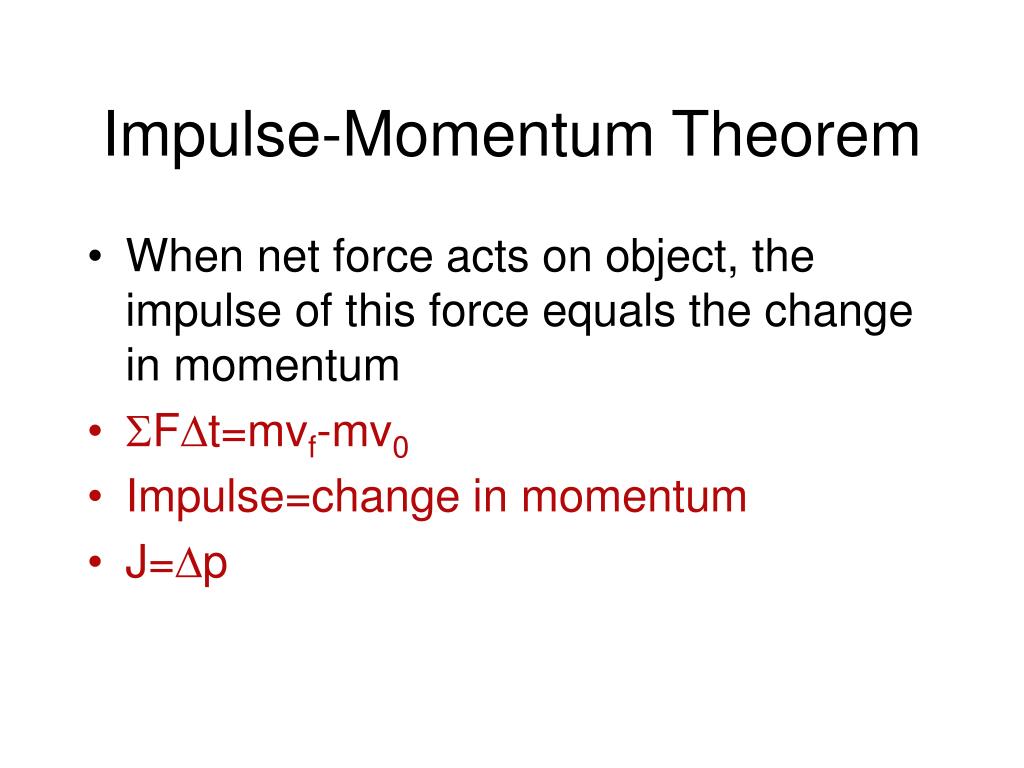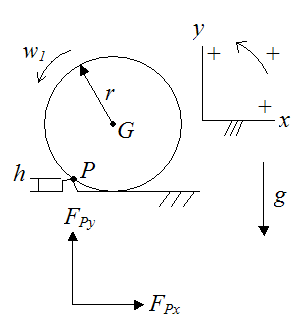

Therefore, we’ll calculate the force on the meteor and then use Newton’s third law to argue that the force from the meteor on Earth was equal in magnitude and opposite in direction. It is conceptually easier to reverse the question and calculate the force that Earth applied on the meteor in order to stop it. (credit: “Shane.torgerson”/Wikimedia Commons) Strategy The amount by which the object’s motion changes is therefore proportional to the magnitude of the force, and also to the time interval over which the force is applied.įigure 9.7 The Arizona Meteor Crater in Flagstaff, Arizona (often referred to as the Barringer Crater after the person who first suggested its origin and whose family owns the land). Alternatively, the more time you spend applying this force, again the larger the change of momentum will be, as depicted in (Figure). Clearly, the larger the force, the larger the object’s change of momentum will be.
#Point impulsive force free#
Suppose you apply a force on a free object for some amount of time. The purpose of this section is to explore and describe that connection. This indicates a connection between momentum and force. Therefore, if an object’s velocity should change (due to the application of a force on the object), then necessarily, its momentum changes as well. We have defined momentum to be the product of mass and velocity. Apply the impulse-momentum theorem to solve problems.and that hurts.By the end of this section, you will be able to: The stiff arm catch leads to a greater force. And this is why catchers catch the pitched ball with a relaxed arm.

So catching a baseball with a relaxed arm and a retracting motion leads to a smaller force. You also have determined that the collision times (∆t) is greater for the catch made with the relaxed arm. You have just determined that it is the same for both Cases.

And so there is no difference in momentum change for these two cases. You have just determined that the mass and the velocity change is the same for both Cases. Momentum change is the mass multiplied by the velocity change. The momentum change is your starting point. You will also have to compare the momentum change and the impulse encountered by these two baseballs. The relaxed arm collision has the greatest time.

But if the catcher has a relaxed arm and retracts backwards with the ball during the collision, the time is longer. This leads to the smaller collision time. When a catcher has a stiff or rigid arm, the ball stops immediately. So they have the same velocity change. So by careful reading and the process of elimination, the variable in these collisions is the time. And both baseballs change their velocity from 40 m/s to 0 m/s. The two balls have the same mass so rule out mass. It is either the velocity change (Delta V), the collision or contact time, or the mass of the baseballs.
#Point impulsive force how to#
Here's how to think about the physics of these collisions:įirst you must determine what the variable is. In the other case, the catcher's arm is relaxed and the ball and mitt move backwards a bit once the contact begins. In one case, the catcher's arm is stiff and there is little backward movement of the mitt and ball once contact begins. In this question, you will have to compare two collisions of a ball with a catcher's mitt.


 0 kommentar(er)
0 kommentar(er)
